#although in the revival it makes no sense because the prince’s colors are gold
Text
Broke: Mercutio being the nephew of the Prince and thus wearing Escalus colors
Woke: Mercutio being the nephew of the Prince but purposefully wearing blue to show his identification with the Montagues and being taken as an honorary member by all parties involved
#romeo et juliette#retj#mercutio#although in the revival it makes no sense because the prince’s colors are gold#and then paris shows up in neither of those colors#i’m just saying that it probably would have been better if mercutio was just a full on montague#either that or this#also the prince being 200% done with mercutio is something i desperately need#and the montagues mourning him as if he were one of their own#more than the prince and his family#tybalt hating him because he doesn’t have to be a montague#and being at some level genuinely ????#and his instant remorse when he learns mercutio has been stabbed#oh god that’s good shit#into my english retj it goes#cristina is silly
44 notes
·
View notes
Text
The Princess Bride: The Characters, Part 2: The Sicilian Crowd, the Villains, and Conclusion
When we are first introduced to Inigo, he’s not exactly a glowing example of heroism. A former alcoholic, Inigo is a Master Swordsman, working as a mercenary, he is one of the trio who first kidnaps Buttercup (under Humperdinck’s orders). He’s fine with the abduction itself, but shows a few of his true colors when he objects to murdering her, already proving himself a little more decent than Vizzini, the leader of the band.
A little later, during the duel with Westley, much is revealed about Inigo, more in fact than you ever learn about the backstories of either Westley or Buttercup: the story of his father’s murder and his own desire for revenge, so strong that it has encouraged him to dedicate his life to mastering the art of fencing. The duel, exciting enough from an action and comedy standpoint, also clues the audience in on a few other key details: Inigo isn’t really all that bad of a guy, just a man on a Roaring Rampage of Revenge, again demonstrating the same duality (just reversed) that Westley does.
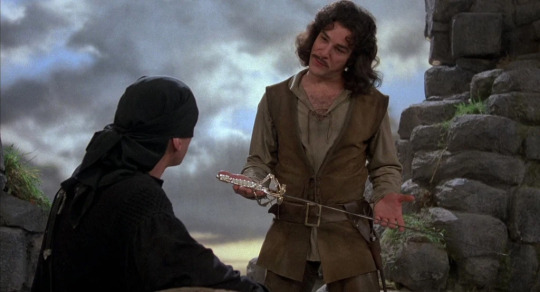
Despite not having as much screen time and focus as Buttercup and Westley, Inigo is the Breakout Character of The Princess Bride, a Determinator, the Lancer of the film. As I mentioned, he’s also the character we receive the most information about, learning that he is a man of honor, good hearted, and loyal through his interactions with other characters, notably Westley and Fezzik. Thanks to his sympathetic backstory and one-track mind, he’s understandable to the audience: we know everything about him and why he is doing everything. He’s totally transparent in the best way, he makes sense, and the audience roots for him. They care about him, even when he’s initially introduced as a more villainous character (albeit one with truly hilarious lines). The audience arguably has a stronger attachment to him than they do to Westley and Buttercup, which is very unusual, especially when Inigo disappears for a while after Westley defeats him in battle.
In a way, Inigo would seem to have the qualities very necessary to carry a film: tragic backstory, sympathetic motivation, understandable actions rooted in very clear character traits, and indeed, a lot of elements that put him in the Hero camp. And yet, like Buttercup and Westley, while some things fit him into this mold, others don’t.

Although he doesn’t have a connection to Humperdinck (aside from him being a distant employer), he does have a very strong tie to the main villains of the story in Count Rugen.
Rugen is, of course, the six-fingered man who murdered Inigo’s father so many years ago, and scarred Inigo himself. It is he that Inigo is out to get throughout the entire film (and his entire life), a much stronger tie to an individual character in a personal way than Westley’s nemesis: Humperdinck. Rugen is much more of an arch-nemesis, representing a very personal loss to Inigo, something that cuts much deeper, even, than true love. While Westley never seems particularly worried about himself or Buttercup because he just knows that True Love will keep them together, Inigo reacts very strongly to Rugen and his own emotional journey, traits more typically associated with a protagonist than a cool confidence in how everything will turn out.
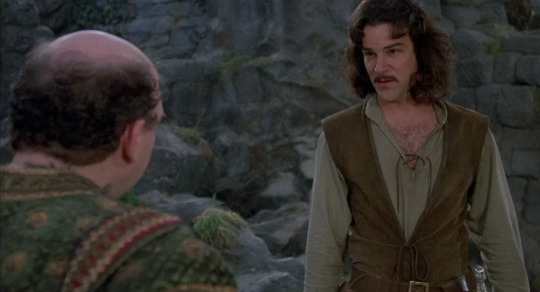
As a direct result to this personal stake in the story, Inigo, being at full strength and in full health, is the one who is given the final climactic battle at the end of the movie.
Where Westley has a rather anticlimactic confrontation with Humperdinck, Inigo gets a huge duel with Rugen, the climax centerpiece, the scene most memorable and most quoted in the entire film, ending in Inigo actually achieving his goal: getting revenge. Afterwards, he even muses that after having gotten his revenge, now he no longer knows what to do with his life, with the film implying that he will become the next Dread Pirate Roberts in Westley’s place.
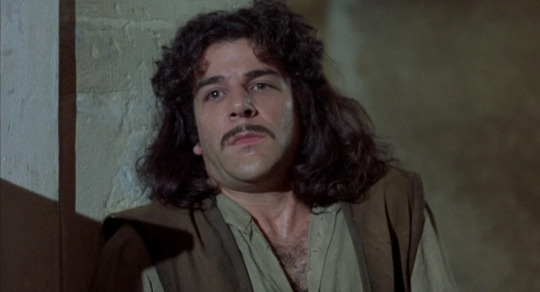
Unlike Westley, and even unlike Buttercup, Inigo has an arc, pursuing what he wants actively, achieving it, and moving on. He makes choices that have huge consequences in the plot: pursuing revenge, leaving Vizzini, finding Westley and bringing him to Miracle Max. In a way, a huge part of the story is Inigo’s, just as much as it is Buttercup and Westley’s.
Westley has the Heroic qualities, Buttercup has most of the focus (and her title in the movie’s name), and Inigo has the dramatic arc and climactic battle. On their own, no one character manages to pull off the full requirements for being a fantasy protagonist, or even a protagonist at all, but together, they manage to make one complete protagonist between them. While the story of The Princess Bride, in plot beats and story elements, seems very much like your very traditional fairy-tale story, in terms of protagonist, the execution is actually very complex. By taking the traits of a protagonist and dividing them equally between three characters with varying levels of screen-time and activism within a story (not always at the same time), the story manages to get the audience’s interest invested in not one, but three characters equally, weaving the major threads for each of their stories in amongst each other to keep it all tied together. And in the end, both the characters and the audience (even the Grandson!) feel closure and satisfaction.
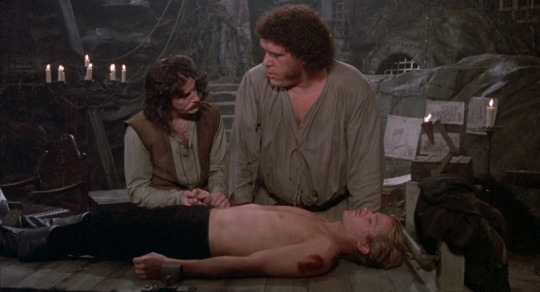
But Inigo, Westley and Buttercup aren’t the only characters in the film. Every story needs their supporting cast, and none are quite as supportive as Fezzik.
Fezzik is a Gentle Giant. He’s big and strong, for sure, but he’s also very kind, the Big Guy with a heart of gold who, while not exactly being a pushover, isn’t out to hurt anybody who doesn’t deserve it. He’s the Brute of Vizzini’s Beauty, Brains, and Brawn trio, and manages to subvert the Dumb Muscle stereotype. He’s not terribly clever, but he does have a wit and intelligence to him that isn’t typical of most fairy-tale giants.

He and Inigo are borderline inseparable, and much like Inigo, Fezzik is somewhat okay with kidnapping Buttercup for money, but he’s considerably less approving of killing her. Like Inigo, he is a man of honor, preferring to fight Westley in a ‘sportsmanlike’ way instead of clubbing him over the head with a rock like Vizzini first suggests. He’s a good, loyal friend, rescuing Inigo from the palace guards, sobering him up, and then accompanying him throughout the rest of the story in finding and reviving Westley and then storming the castle.
Unlike Inigo, Westley and Buttercup, Fezzik has no stake in this story. He has no goal to achieve here, no personal mission. After Vizzini, his ‘boss’, is killed, there’s nothing keeping Fezzik in the story except his own will, like the Chewbacca to Inigo’s Han Solo. He’s here because of his loyalty and concern for his friends. He just wants to help, and help he does, turning his back on his mercenary ways pretty easily and without any real convincing. He’s along for the ride, a supporting character that manages to be more than just ‘the comic relief’. (In a way, one of the smartest things The Princess Bride did in terms of its characters was to make everyone funny, so no one is relegated to ‘just’ the comic relief.)
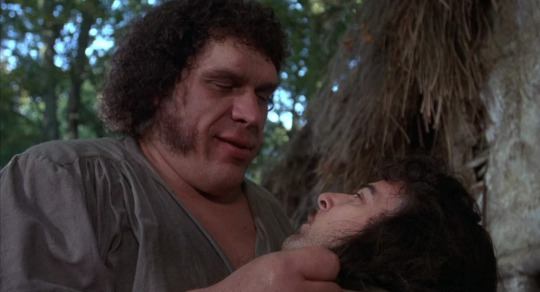
With that said, Fezzik still remains an active character in the story, helping with the storming of the castle and providing the Muscle (and the heart!) for the mission, and providing the escape by finding Humperdinck’s four white horses in his stable.
Starting out as a Minion with an F in Evil, Fezzik ends The Princess Bride as one of its most memorable and loved heroes, a kindly figure of support who’s anything but minor.

Which is more than we can say for the deceased leader of the trio of kidnappers: Vizzini.
Vizzini is the smartest of the trio sent to abduct Buttercup, but despite his bragging, he demonstrates hints that he’s not half as smart as he thinks he is. The brains to Inigo’s beauty and Fezzik’s brawn, Vizzini is merely a Big Bad Wannabe, the final obstacle for Westley’s initial reunion with Buttercup, a Disk One Final Boss before the plot kicks off with portraying Humperdinck as the real villain. However, while the film points out that Fezzik and Inigo fight Westley with honor, and he leaves them respectful of their talents (defeating them in the process), Westley shows no such respect for Vizzini’s ‘talents’, and simply Out-Gambits him, despite Vizzini’s Poisoned Chalice Switcheroo. In the end, Vizzini is Too Clever by Half, and is the only one of the Sicilian Crowd to be killed, most likely due to his arrogance.

Despite his death being one of the most memorable scenes in the entire film, Vizzini doesn’t receive much screen time, or even narrative weight, in comparison to the true villains of the movie. After all, Vizzini is only a hired stooge, a pawn in Humperdinck’s evil plan.
Humperdinck, as far as fairy-tale villains go, isn’t terribly impressive. He’s no great dragon or emperor, or evil wizard. He’s just a prince, a man with a lot of power who’s used to getting his own way. He does plenty of rotten things along the way (torture Westley and kill him, order Buttercup’s kidnapping, attempt to kill her) but in the end, his goal isn’t world-domination, or wealth, or anything like that: he’s just after an excuse to go to war with the neighboring country. He’s not after Buttercup for her beauty, like many other fairy-tale villains before him, he’s just after her to use as a political figure, aiming to kill her after their wedding night and pin it on Guilder.
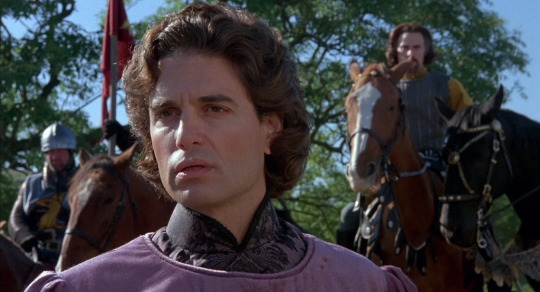
Arguably, this makes him worse.
There’s no great, over-the-top explanation for his villany. He’s not cartoonish or after traditional fairy-tale things, he’s actually after something that we’d see in the real world. He is the true Big Bad, the Chessmaster, The Evil Prince obsessed with war, who, ironically, happens to be a Dirty Coward.

Oddly enough, throughout the film, although Humperdinck is presented as the Archenemy of Westley, there’s no real personal connection between them. This isn’t like Beauty and the Beast, where both men are vying (in their own way) for Buttercup’s affection. Humperdinck honestly couldn’t care less about Buttercup, viewing her as a tool to get what he really wants. In the end, he rushes through a marriage ceremony in order to murder Buttercup after the wedding, again, nothing personal, just business. His only connection to Westley is happening to choose the wrong girl to murder.
As such, as opposed to Count Rugen’s thematically resonant demise, Humperdinck is actually allowed to live, and go free at the end of the story, which seems to be a big-time rule-breaker in terms of fairy-tale storytelling. The Grandson himself expresses irritation and disbelief at this fact, after all, villains should be punished, not sternly talked-down by a paralyzed hero.

Yet, that’s what happens. Considering that the most Humperdinck managed to do was temporarily kill Westley, he gets very little ‘revenge’ in return. Like I said in the Story article:
Westley couldn’t care less about Humperdinck other than the fact that he’s getting in the way of his and Buttercup’s storybook love. Humperdinck is an obstacle to his true goal and drive, and he’s not worth the killing. Once he’s out of the way and Westley and Buttercup are reunited, Humperdinck ceases to matter to Westley. If the story had been from Miracle Max’s point of view, Humperdinck would have died or at least, have something more horrible happen to him, but since Humperdinck never really succeeded in doing much of anything throughout the story, he’s actually so pathetic that he’s not worth Westley’s time.
So, yeah, Humperdinck is left to live with his cowardice because his death wouldn’t have provided the characters anything except maybe catharsis, and honestly, that’s not really a good enough reason to off your villain
He’s such a coward, he doesn’t even have a chance to take part in a climatic duel. He’s so unimpressive as a fantasy villain that he even strips the audience of their chance to see another sword fight, without diminishing his hatefulness and narrative weight as a villain.
Thankfully, the audience does get their climactic battle: thanks to Count Rugen.
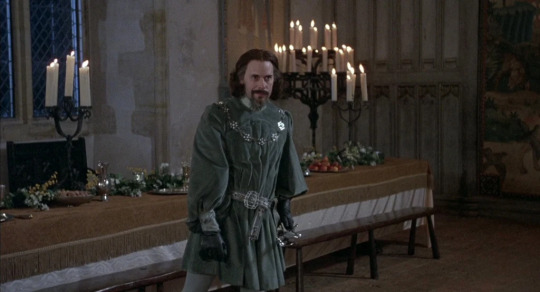
Rugen is Inigo’s archenemy, rather than Westley’s, and unlike the rivalry between the main protagonist and antagonist, Rugen’s relationship with Inigo is very personal indeed. Rugen, the six-fingered man that Inigo wants to hunt down and kill so badly, is the man who killed Inigo’s father, and left him scarred as a little boy. Rugen is the Dragon, a Soft-Spoken Sadist who serves as Humperdinck’s Right Hand Man and Torture Technician. He is the inventor of the torture machine that ends up taking Westley’s life, and throughout the film, serves as co-conspirator to Humperdinck.
He’s pretty rotten, and just like Humperdinck, proves himself to be a Dirty Coward too.
However, while Westley let Humperdinck live with that knowledge, Inigo offers Rugen no such mercy.
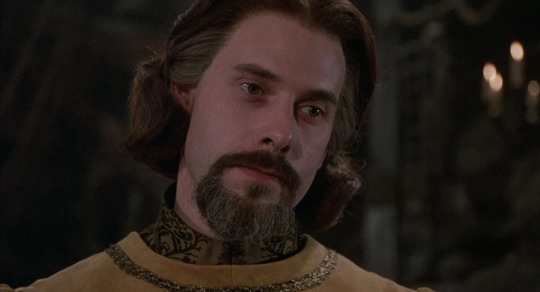
The final duel between Inigo and Rugen is one of the show-stopping setpieces of the film, paying off a considerable amount of buildup foreshadowed with much of Inigo’s dialogue and character. Like I said in the ‘Story’ article:
On the other hand, Inigo’s villain, Count Rugen, is killed, for a very simple reason: that’s the logical end to fulfill Inigo’s story.
In order for Inigo to feel fulfilled and gain satisfaction, to lay his father’s spirit to rest, Rugen has to die, knowing why he’s dying, and who it is who killed him. In a sense, the antagonists fit the ‘antagonist’ bill much the same way the protagonists do: by splitting the roles, from Humperdinck having the main plot being responsible for most of the obstacles, where Rugen fills in for the emotional punch instead.
There are other characters too, of course: Miracle Max and his wife Valerie, offering a comedic look at a few other residents of Florin, The Albino, Rugen’s assistant, The Impressive Clergyman, and even Yellin, the captain of the guard, but for the most part, these characters (aside from Miracle Max and Valerie being responsible for resurrecting Westley) serve as comedic filler, without much actual narrative weight.

As fairy-tale archetypes with surprising amounts of dimension, the characters of The Princess Bride all do their jobs with ease, falling into natural roles in an organic fashion, despite the unconventional structuring of the characters’ parts to play.
The beauty of all of these characters is that none of them are in the slightest bit realistic. These are very clearly ‘fairy-tale’ characters, who don’t think about things in the way that we do, and yet, the audience still relates to them, is entertained by them, is concerned for them. Even though characters don’t act in terribly realistic ways, they are motivated by things that we understand: love, revenge, etc. The audience feels and understands their emotions, and therefore understands where characters are coming from, even if the actions taken by the characters are primarily ‘fantasy based’, superhuman, incredibly skilled and heroic or villainous in the context of the story that the Grandfather is reading to the Grandson.
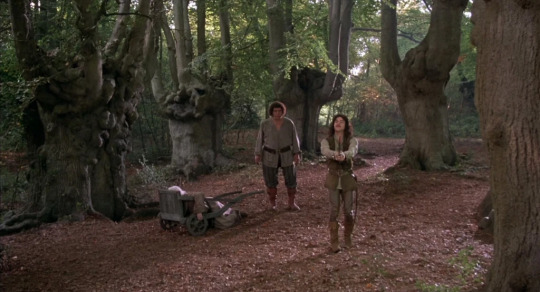
The Princess Bride’s characters are not portrayed as ‘people’, instead being played as simple characters typical of traditional ‘fairy-tale’ stories. Each character, whether hero or villain, behaves almost as though they know what part they inhabit, playing the ‘fairy-tale’ aspect straight, with a comedic edge to the archetypes found in a book, a familiar-feeling, simple, but emotional story that people have loved and laughed with for decades.
The characters of The Princess Bride serve their purpose incredibly well: making the audience care about what happens to them. Every role is memorable, unique, distinct, with plenty of quotes and character tics to be referenced and replicated decades later. They perfectly match the film they belong to: a fantasy classic that has finally been Vindicated by History, gaining it’s rightful place among fantasy greats.
Thank you guys so much for reading! If you have something you’d like to add or say, don’t forget that the ask box is always open! I hope to see you all in the next article.
#The Princess Bride#The Princess Bride 1987#1987#80s#Adventure#Comedy#Family#Fantasy#Romance#PG#Cary Elwes#Robin Wright#Mandy Patinkin#Chris Sarandon#Christopher Guest#Wallace Shawn#André the Giant#Peter Falk#Fred Savage#Rob Reiner#Film#Movies
34 notes
·
View notes